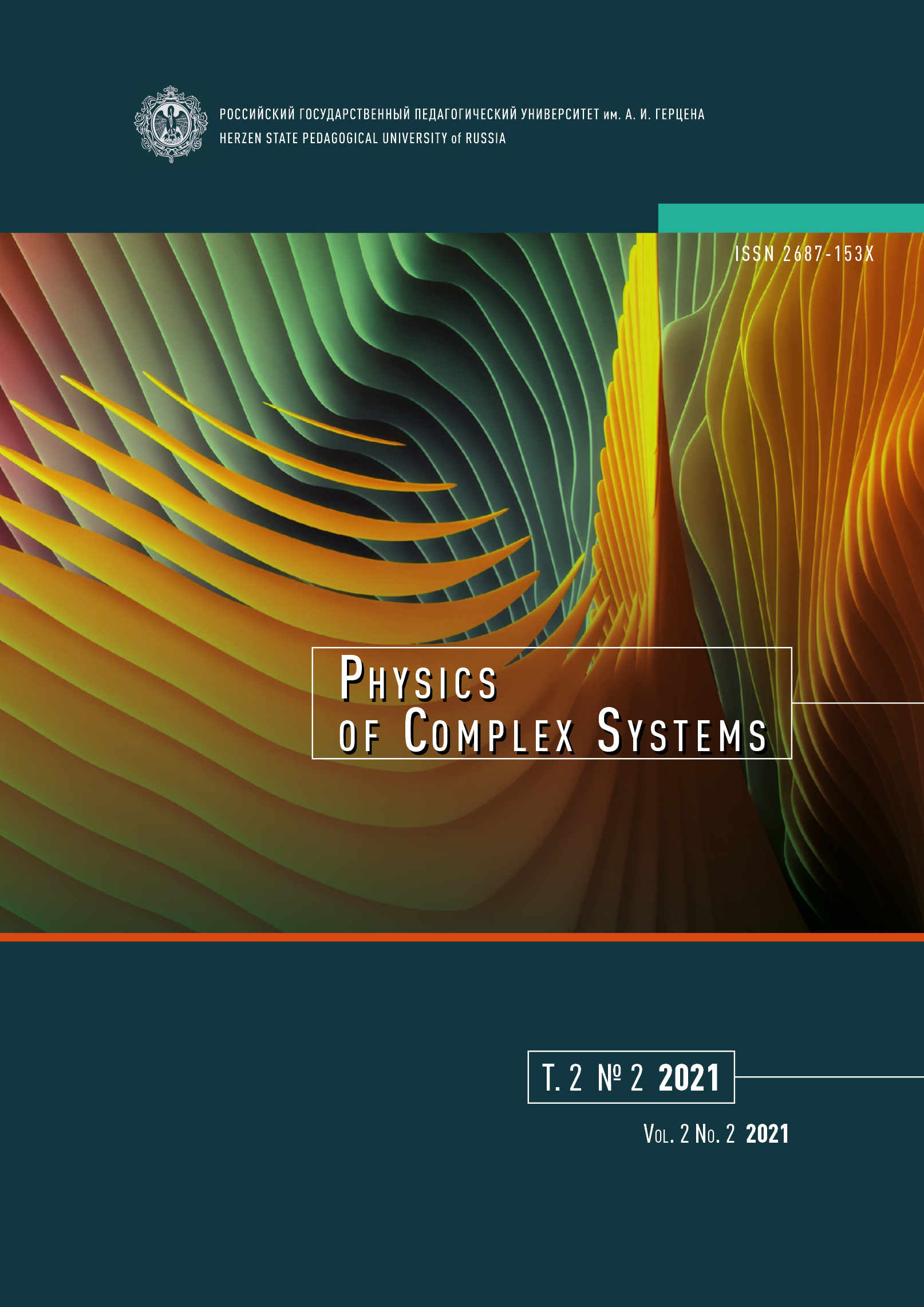Comments on the electronic transport mechanisms in the crystalline state of Ge—Sb—Te phase-change materials
DOI:
https://doi.org/10.33910/2687-153X-2021-2-2-74-80Keywords:
Ge—Sb—Te phase-change materials, crystalline phase, electronic transport, grain boundary, metal-insulator transition, degenerate semiconductor, dirty metalAbstract
It is known that phase-change materials, such as Ge–Sb—Te ternary system, are promising resistive non-volatile random-access memory applications with ultra-rapid reversible transformations between the crystalline and amorphous phases. This class of electronic transition is categorized to be the metal-insulator transition (MIT). The Anderson-type MIT has been discussed extensively in phase-change materials (PCMs) and isothermal annealing of amorphous PCMs (a-PCMs) which, above a certain temperature, leads to the metallic (crystalline) phase. In the insulator regime near the MI transition, Mott-type variable-range hopping (VRH) and/or Efros-Shkolvskii hopping (ESH) at low temperatures below 20 K (and down to 1 K) in Ge1Sb2Te4 (GST124) have been discussed extensively, however, we criticize the above argument through a detailed discussion of physical parameters that support the VRH mechanism. It is not clear whether or not the density-of-states (DOS) near the Fermi level is localized (like the Fermi glass) in the crystalline phase. It is also suggested that grain boundaries are expected to interfere with the electronic transport in the crystalline state. We should take into account the grain boundary effects on the electronic transport in the crystalline phase of Ge—Sb—Te system.
References
Avdonin, A., Skupiński, P., Grasza, K. (2016) Hall effect in hopping regime. Physica B: Condensed Matter, 483, 13–18. https://doi.org/10.1016/j.physb.2015.12.024 (In English)
Brodsky, M. H., Gambino, R. J. (1972) Electrical conduction in evaporated amorphous silicon films. Journal of Non-Crystalline Solids, 8–10, 739–744. https://doi.org/10.1016/0022-3093(72)90221-9 (In English)
Kato, T., Tanaka, K. (2005) Electronic properties of amorphous and crystalline Ge2Sb2Te5 films. Japanese Journal of Applied Physics, 44 (10R), 7340–7344. https://doi.org/10.1143/JJAP.44.7340 (In English)
Kim, J.-J., Kobayashi, K., Ikenaga, E. et al. (2007) Electronic structure of amorphous and crystalline (GeTe)1- x(Sb2Te3)x investigated using hard x-ray photoemission spectroscopy. Physical Review B, 76 (11), article 115124. https://doi.org/10.1103/PhysRevB.76.115124 (In English)
Kumar, S., Singh, D., Thangaraj, R. (2013) Structural, electrical and optical study of thermally evaporated Ge8Sb2Te11 thin films. Thin Solid Films, 531, 577–582. https://doi.org/10.1016/j.tsf.2013.01.057 (In English)
Mott, N. F. (1993) Conduction in non-crystalline materials. 2nd ed. Oxford: Clarendon Press, 160 p. (In English)
Mott, N. F., Davis, E. A. (1979) Electronic processes in non-crystalline materials. 2nd ed. Oxford: Clarendon Press, 608 p. (In English)
Ortuno, M., Pollak, M. (1983) Hopping transport in a-Ge and a-Si. Philosophical Magazine B, 47 (6), L93–L98. https://doi.org/10.1080/01418638308228274 (In English)
Raoux, S., Xiong, F., Wuttig, M., Pop, E. (2014) Phase change materials and phase change memory. MRS Bul¬letin, 39 (8), 703–710. https://doi.org/10.1557/mrs.2014.139 (In English)
Shimakawa, K., Miyake, K. (1988) Multiphonon tunnelling conduction of localized π electrons in amorphous carbon films. Physical Review Letters, 61 (8), 994–996. https://doi.org/10.1103/PhysRevLett.61.994 (In English)
Shimakawa, K., Kadlec, F., Kadlec, C. et al. (2020) Effects of grain boundaries on THz conductivity in the crys-talline states of Ge2Sb2Te5 phase-change materials: Correlation with DC loss. Rapid Research Letter, 15 (3), article 2000411. https://doi.org/10.1002/pssr.202000411 (In English)
Shimakawa, K., Wagner, T., Frumar, M. et al. (2013) Terahertz and dc current losses and the origin of non-Drude terahertz conductivity in the crystalline states of phase change materials. Journal of Applied Physics, 114 (23), article 233105. https://doi.org/10.1063/1.4847395 (In English)
Shklovskii, B. I., Efros, A. L. (1984) Electrical properties of doped semiconductors. Berlin: Springer Publ., 388 p. https://doi.org/10.1007/978-3-662-02403-4 (In English)
Siegrist, T., Jost, P., Volker, H. et al. (2011) Disorder-induced localization in crystalline phase-change materials. Nature Materials, 10 (3), 202–208. https://doi.org/10.1038/nmat2934 (In English)
Terao, M., Morikawa, T., Ohta, T. (2009) Electrical phase-change memory: Fundamentals and state of the art. Japanese Journal of Applied Physics, 48 (8R), article 080001. https://doi.org/10.1143/JJAP.48.080001 (In English)
Volker, H., Jost, P., Wuttig, M. (2015) Low-temperature transport in crystalline Ge1Sb2Te4. Advanced Func¬tional Materials, 25 (40), 6390–6398. https://doi.org/10.1002/adfm.201500830 (In English)
Wagner, T., Orava, J., Prikryl, J. et al. (2009) Medium-term thermal stability of amorphous Ge2Sb2Te5 flash-evaporated thin films with regards to change in structure and optical properties. Thin Solid Films, 517 (16), 4694–4697. https://doi.org/10.1016/j.tsf.2009.03.074 (In English)
Wuttig, M., Yamada, N. (2007) Phase-change materials for rewritable data storage. Nature Materials, 6 (11), 824–832. https://doi.org/10.1038/nmat2009 (In English)
Zhang, Y., Dai, O., Levy, M., Sarachik, M. P. (1990) Probind the coulomb gap in insulating n-Type CdSe. Physical Review Letters, 64 (22), 2687–2689. https://doi.org/10.1103/PhysRevLett.64.2687 (In English)
Downloads
Published
Issue
Section
License
Copyright (c) 2021 Koichi Shimakawa, Ruben Jeronimo Freitas

This work is licensed under a Creative Commons Attribution-NonCommercial 4.0 International License.
The work is provided under the terms of the Public Offer and of Creative Commons public license Creative Commons Attribution 4.0 International (CC BY 4.0).
This license permits an unlimited number of users to copy and redistribute the material in any medium or format, and to remix, transform, and build upon the material for any purpose, including commercial use.
This license retains copyright for the authors but allows others to freely distribute, use, and adapt the work, on the mandatory condition that appropriate credit is given. Users must provide a correct link to the original publication in our journal, cite the authors' names, and indicate if any changes were made.
Copyright remains with the authors. The CC BY 4.0 license does not transfer rights to third parties but rather grants users prior permission for use, provided the attribution condition is met. Any use of the work will be governed by the terms of this license.







